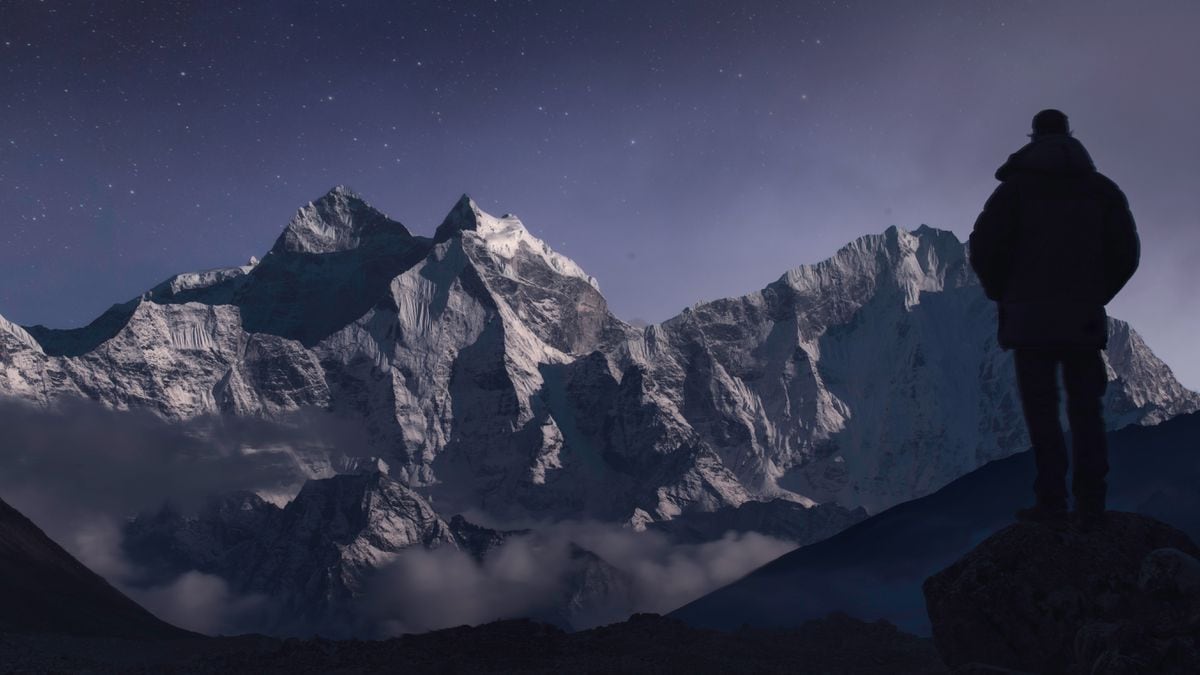/cloudfront-eu-central-1.images.arcpublishing.com/prisa/C24JURRLPNABFMTVSML6QDFUVY.jpg)
First I’m going to tell you how the height of mountains was measured at the beginning. A couple of centuries ago, to do this, the variation of atmospheric pressure was used. For example, in 1802 Alexander von Humboldt measured the height of the Chimborazo volcano in Ecuador. To do this he used a barometer. He climbed to the top and simply using Torricelli’s laws, as the pressure decreases with altitude not in a totally linear way but almost, he was able to calculate the height although only approximately. The problem with this method is that local weather conditions also cause the pressure to vary so it is imprecise.
Later there was a whole stream to which George Everest, the British surveyor who gave the Himalayan mountain its name in the 1950s, belonged, in which triangulation began. How does this work? If you are at a point at the foot of the mountain and you know perfectly the distance that separates you from it, with a device that measures angles very accurately and is called theodolite, you can know the angle formed by the line that joins the summit of the mountain with the point where you are and the horizontal. Thus, knowing one side of the triangle (the horizontal distance to the adjacent mountain or leg) and the tangent of the angle, by trigonometry, you can calculate the height of the mountain (the opposite leg). But this method also had problems because the further from the foot of the mountain, the more inaccurate in the calculated height. To get more reliable measurements, what they did was a series of small intermediate right triangles to get the total height.
But also in this case there may be controversy because, where do we put the 0? And it is that you measure the height with respect to a reference. In the past, it was already known that the sea level, which could be an excellent 0, oscillated. What was done was an average between the maximum and minimum levels of the tides. Currently, we know a few more things. The first is that the Earth is not perfectly spherical. It is an ellipsoid that is flattened at the poles and is widest at the equator simply because of rotation. And that influences the measurements of the mountains. If you measure Everest with respect to the center of the Earth, it is lower than Chimborazo because Everest is not at the equator, while Chimborazo is, so with respect to the center of the Earth, it is higher Than Everest at about 1,800 meters.
We also now know that sea levels vary on the order of a hundred meters due to the difference in gravitational attraction generated by the heterogeneous distribution of masses inside the planet. This effect has to be added to the attraction of the Moon responsible for the tides … So where do we put the 0 to measure the mountains? In what is called the geoid. We imagine that under Everest, or any other mountain, the water of the oceans follows. The height of this supposed ocean would adopt what is called an equipotential of gravity. That is to say that the gravity would be the same throughout all that surface. This is calculated gravimetrically. Taking gravity at different points, it is possible to tell at what theoretical height the imaginary sea level would be, the geoid: that is the reference surface to calculate the height of a summit.
But this step is avoided with GPS, which is the method we use today to measure the height of mountains. In this case it is also measured by triangulation, but the difference is that we have an external reference. GPS satellites act as a kind of reference network. With respect to this reference network, different points are measured with accuracies that are impressive, on the order of millimeters at distances of hundreds of kilometers.
Ana Crespo She is a professor in the Department of Geodynamics at the University of Granada.
Question sent via email by Paula Garcia
Coordination and writing: Victoria Toro
We respond is a weekly scientific clinic, sponsored by the Dr. Antoni Esteve Foundation and the program L’Oréal-Unesco ‘For women in science’, that answers the doubts of the readers about science and technology. They are scientists and technologists, partners of MY T (Association of Women Researchers and Technologists), those that answer those doubts. Send your questions to nosotrasrespondemos@gmail.com or via Twitter #nosotrasrespondemos.
You can follow MATTER in Facebook, Twitter me Instagram, or sign up here to receive our weekly newsletter.





